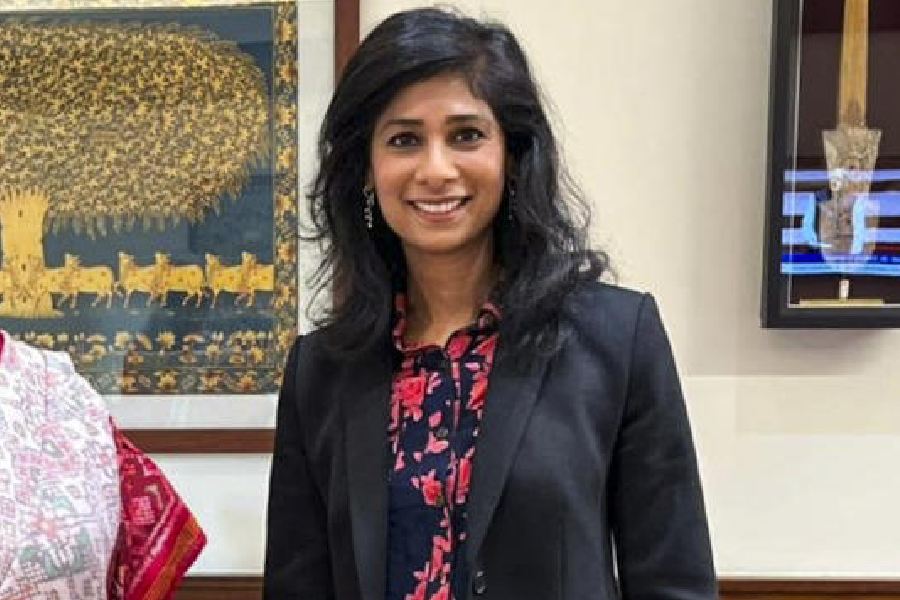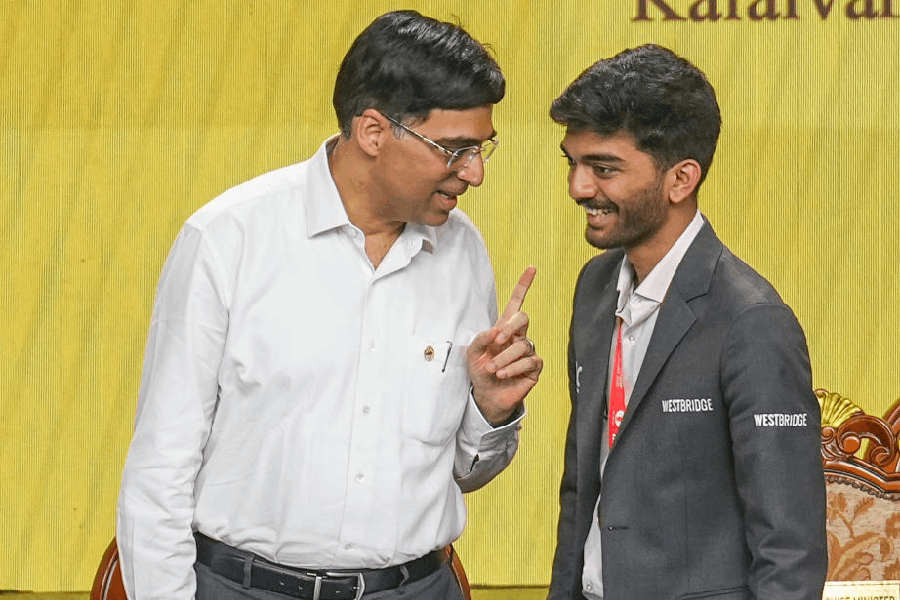
Uma Bharti deserves full marks for her candour, for saying it as it is, for reminding us -lest we had forgotten - the truth behind the demolition of the Babri Masjid in Ayodhya that dark December day in 1992.
The Union water resource minister's comments on April 19 came within hours of the Supreme Court decision to club the trial of L.K. Advani, Murli Manohar Joshi, Uma Bharti and other top Bharatiya Janata Party and Vishwa Hindu Parishad leaders with that of hundreds of kar sevaks who are being tried at a special court in Lucknow for the demolition of the Babri Masjid.
The two judge bench of Justice P.C. Ghose and Rohinton F. Nariman invoked Article 142 of the Constitution which states: "The Supreme Court in the exercise of its jurisdiction may pass such decree or make such order as is necessary for doing complete justice in any cause or matter pending before it..."
Justifying the invocation of its sweeping powers, the judges noted: "The Latin maxim fiat justitia ruat caelum is what first comes to mind on a reading of Article 142 - let justice be done though the heavens fall."
These were strong words indeed and underlined that the bench was well aware of the implications of reviving the case and sending to trial leaders of a political persuasion that is now in power with a brute majority both in the state of Uttar Pradesh and at the Centre.
In a refreshing reminder that the demolition was not merely the bringing down of "an old structure" (as the saffron brigade has always sought to portray it), the order said, "In the present case, crimes which shake the secular fabric of the Constitution of India have allegedly been committed almost 25 years ago."
The bench not only clubbed the two trials into a joint one, but ordered a day-to-day hearing from the current stage to be completed in two years. All the accused face a plethora of charges including "criminal conspiracy", a charge that has been restored in the case of Advani, Joshi, Bharti, et al.
Bharti seized on the word, "conspiracy", to declare that she was not guilty. " Koi saazish nahin thi. Sab kuch khullam khulla tha (There was no conspiracy. Everything was in the open)", the once fiery sanyasin declared, adding that she was immensely proud of having participated in the Ramjanmabhoomi movement and was dedicated to the construction of the temple.
In contrast to the studied silence of the BJP brass to the Supreme Court order, Bharti may have come across as aggressive and unrepentant. But the fact is she was also exposing the truth underlying the crime at Ayodhya, a truth that was obscured by the legalese that got embedded in the case after the mosque was brought down by rampaging kar sevaks (volunteers).
The charge of "conspiracy" came to overshadow its "criminal" prefix and the physical destruction of the mosque was given greater importance than the long chain of events that enabled it.
The dictionary meaning of conspiracy is, "A secret plan by a group to do something unlawful or harmful." Much effort has been expended on trying to prove that a small group of kar sevaks were secretly trained to effect the demolition - and that a select few leaders (including the accused) were privy to this secret plan.
The point, however, is it does not really matter. Whether or not a secret plot had been hatched, the stark truth is what happened in Ayodhya that winter afternoon was the culmination of an open, brazen, highly publicized, cynically manipulated, ideologically guided and politically orchestrated movement led from the front by Advani and backed by the BJP apparatus, in addition to the entire sangh parivar.
It might seem difficult to believe today, but till the late 1980s, even after the Faizabad court ordered the unlocking of the gates of the disputed structure in 1986, the Ramjanmabhoomi issue did not figure in the consciousness of the vast mass of ordinary Hindus. Nor had it been mentioned in the writings of Hindutva ideologues.
The VHP began giving calls for the "liberation" of a temple at the "exact spot" where Lord Rama was born in the 1980s but it acquired a life of its own only after the BJP decided to support the demand in its Palampur resolution in June 1989. Advani followed that up with the rath yatra in September 1990 - a month-long journey across eight states with the avowed aim of creating "the biggest mass movement since Independence".
And all through the rath yatra, Advani spoke out against "minority appeasement" and "pseudo secularism" while the storm troopers kept up an unrelenting chorus of "mandir wahin banayenge" and " ek dhakka aur do, Babri Masjid tod do." These slogans and the fervent mobilization continued apace even after Advani's arrest, leading to bloody riots, but also helping the BJP win its first majority government in Uttar Pradesh in 1991.
That victory did not lead to a new sense of responsibility; it only whetted the appetite for further polarization, a more aggressive show of strength against the minorities - not unlike what we are witnessing in the state all over again. And, so, despite appeals for patience, for negotiations, or for a court order, the BJP-RSS-VHP leadership insisted on mobilizing a huge gathering at the disputed site on December 6, 1992 - assuring the Supreme Court that the kar sevaks would only sing bhajans and offer prayers from a distance. Instead, the leaders made fiery speeches.
BJP supporters insist that the frenzy that followed was a spontaneous outpouring of "mass sentiment". But if it wasn't a conspiracy, it was not a case of "mob fury" either. A mob is an inchoate mass that can erupt into violence by a sudden provocation. The gathering at Ayodhya, in contrast, had been nurtured and nourished by a steady dose of incendiary propaganda, mobilized by a political party and its affiliates and granted impunity by State power.
Advani claimed to be shocked at the manner in which the mosque was destroyed before his eyes and declared it to be the "saddest day" of his life. Even if true, it does not absolve him of blame: to instigate a volatile mass movement and then lose control of it is an abject failure of leadership that only compounds the crime.
The demolition of the Babri Masjid created a permanent wound in the soul of India and left a trail of sectarian savagery - riots across the country, the Bombay blasts, the Godhra and post-Godhra violence - that is yet to find closure.
The Supreme Court order might speed up the trial in a Lucknow court and may even lead to some convictions. But the larger trial of Ayodhya will not end till the charioteers and cheerleaders of the Ram temple movement secure a just resolution, a genuine reconciliation, a heartfelt atonement for the sin of vandalizing a 16th-century mosque and a 20th-century Constitution.
There is no sign of that happening. Buoyed by the relentless string of electoral victories and confident of returning to power in 2019, the BJP is likely to speed up its plans to build a grand temple at the disputed site.
What it does not realize is that no matter how 'magnificent' it turns out to be, if it comes up through majoritarian might, it will never equal or even come close to another edifice in another town of UP. For if the Taj Mahal is a timeless monument to eternal love, this will forever be a supremacist symbol of triumphal hate, not a place for prayer and piety.










